I've discussed the development of fixed-wing battleship aviation from the earliest days through WWII. But when people learn about the subject for the first time, the biggest question is usually about how it worked. As such, I'm going to look in more detail at the techniques involved.1 I'm going to focus mostly on American practices, and discuss where those of the RN differed.
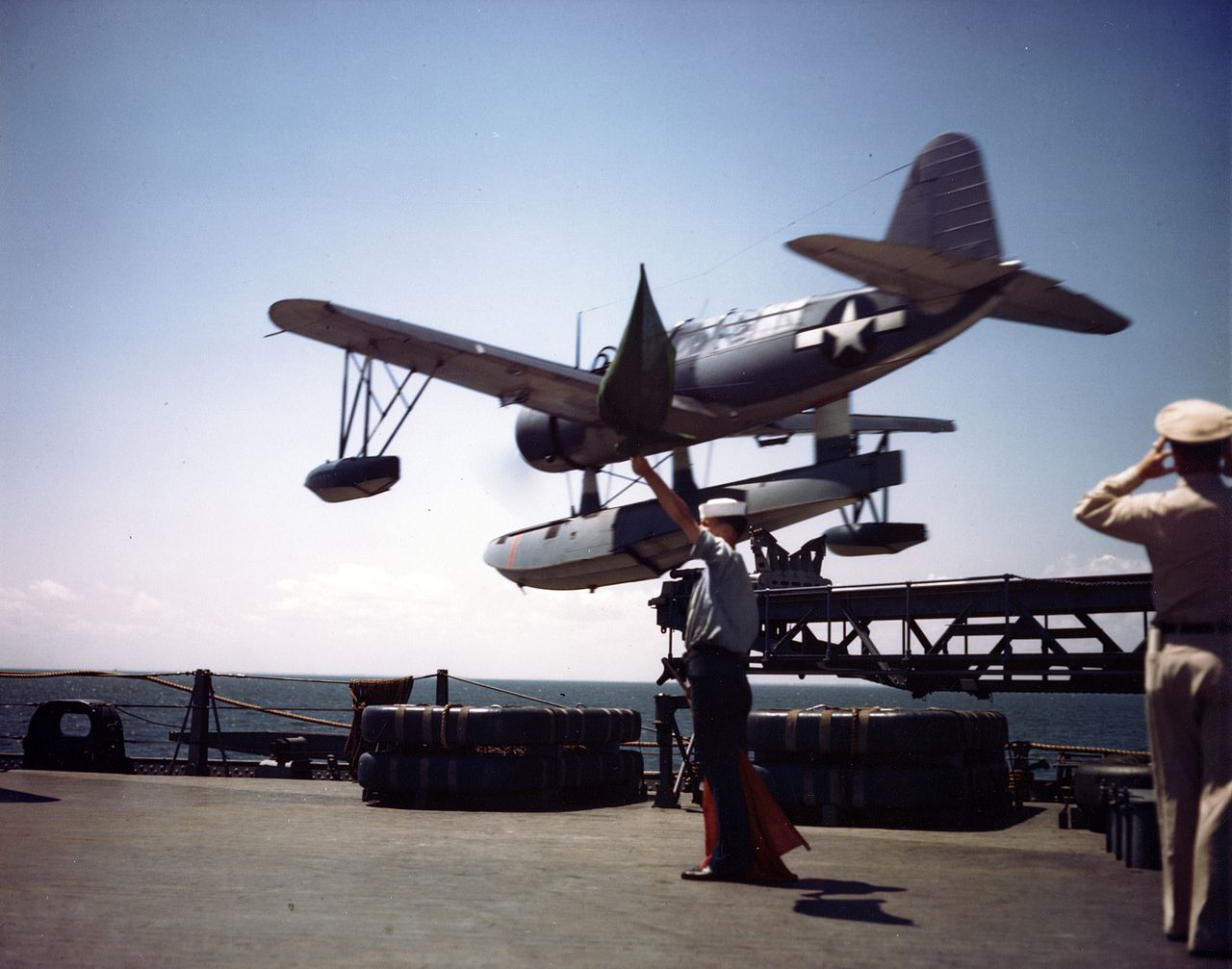
An OS2U is launched from Missouri, 1944
Battleship seaplanes lacked wheels, so they had to be stored on special trolleys. Each catapult had one, which supported the airplane during both storage and launch. Wheeled dummy trolleys were used when there were more airplanes than catapults or when seaplanes had to be moved around on land. When it came time to launch, the seaplane was secured to the trolley by a set of hooks that would keep it on the catapult during the stroke, then release it at the end. The plane would be checked over, fueled, and the engine started up.
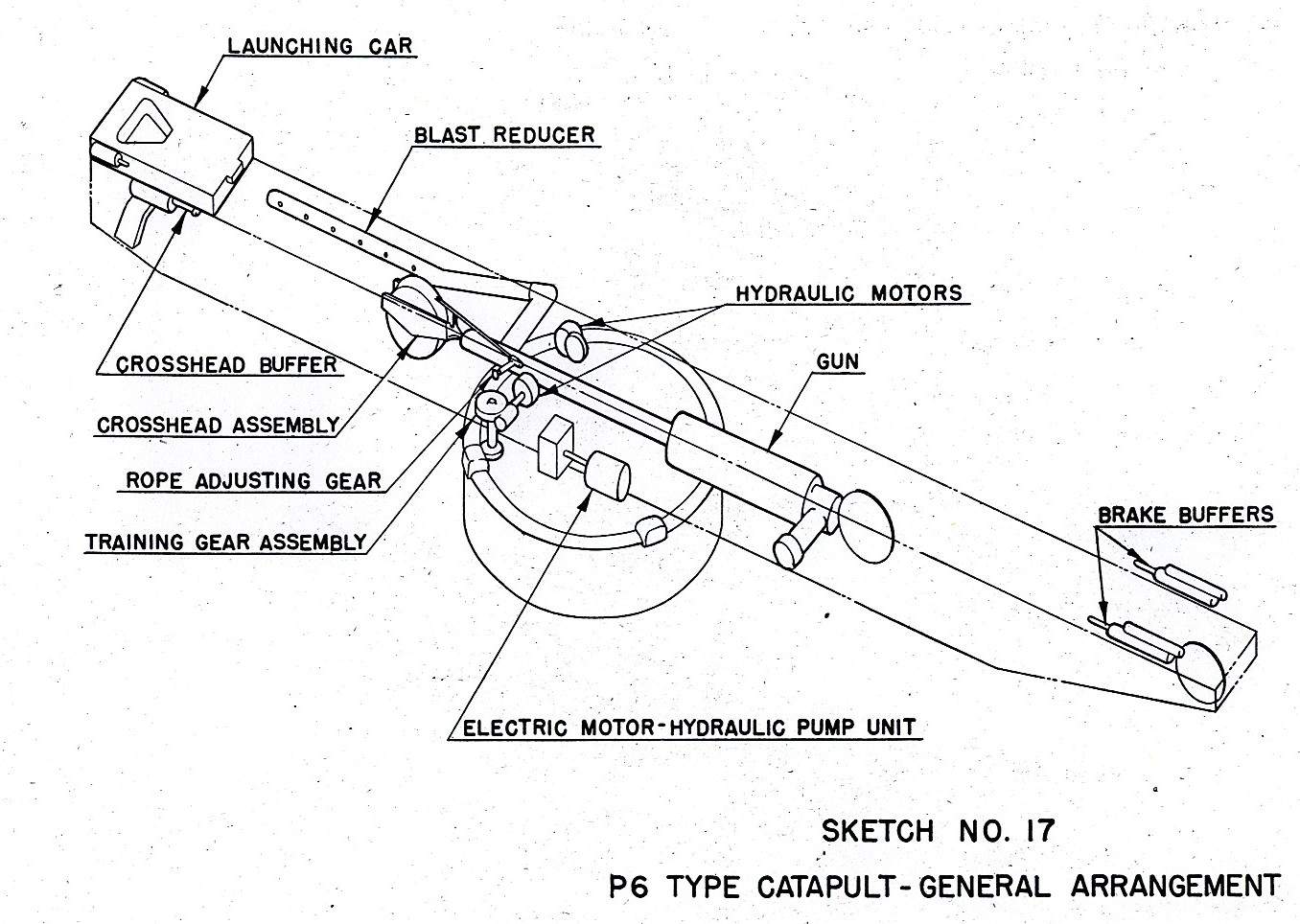
A 5" blank would be loaded into the breech of the catapult mechanism, with the amount of powder carefully calibrated for the weight of the aircraft, and the catapult would be trained out at least 30° from the centerline of the ship. Usually, it would be angled to give the pilot a headwind, increasing his airspeed in the critical moments after launch, but in an emergency, the plane could be launched directly abeam regardless of wind. The pilot would be signaled to test his engine, running it up to full power to make sure there weren't any problems. When he was satisfied, he nodded to the catapult officer, who would then request permission from the bridge to launch. After that was granted, he would again request full power. Once that was reached, the pilot would hold out an arm, then draw it back to his chest. At that point, it was all in the hands of the catapult crew, and the pilot wasn't even allowed to signal an abort.
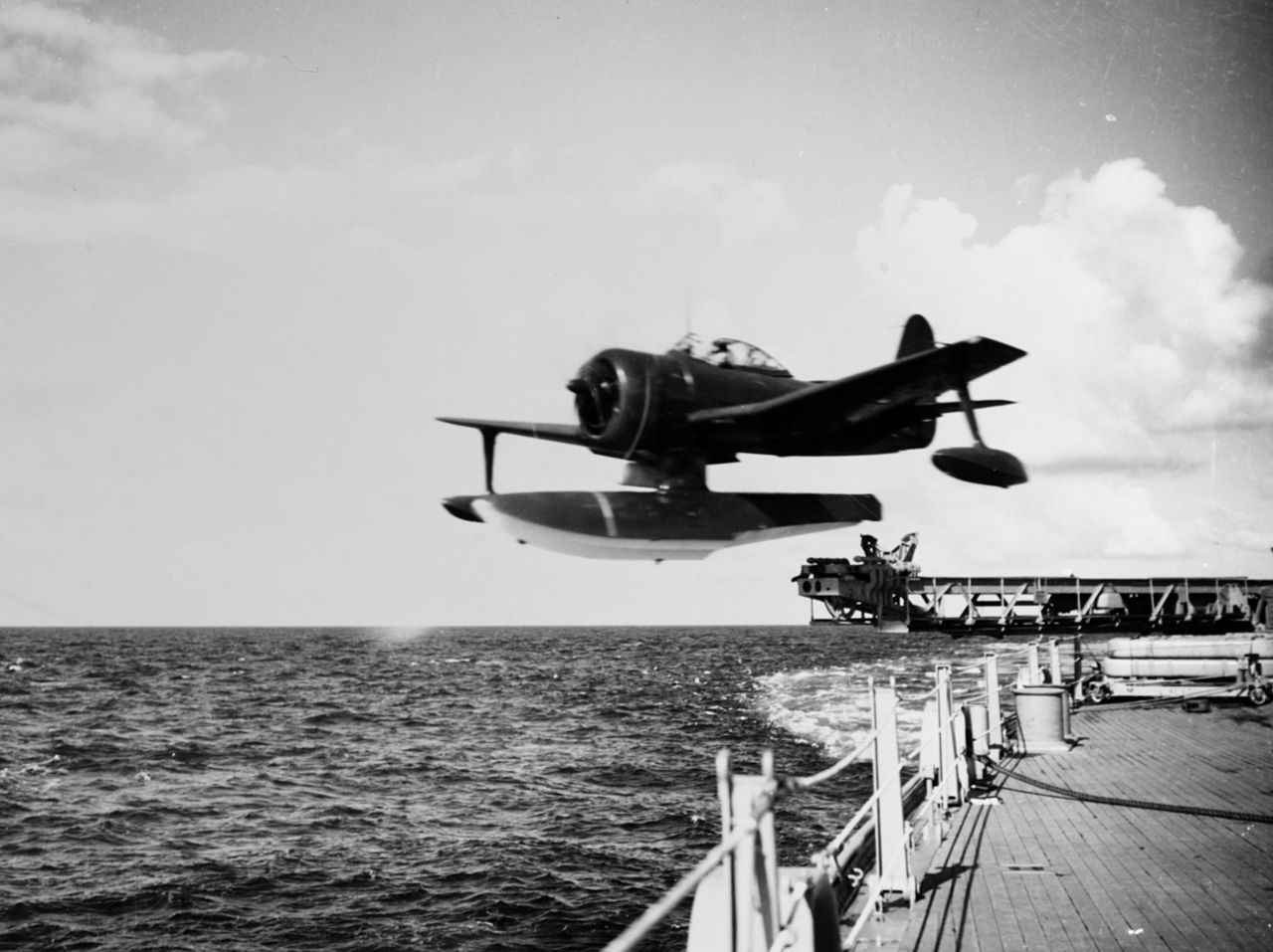
An SC-1 Seahawk is catapulted off Iowa, 1947
The catapult officer would order the safety pins pulled out, and wait for the right moment in the ship's roll. The catapult had to be horizontal or just past horizontal and rising to ensure that the plane wasn't fired into the ocean or flung too slowly to remain airborne. The powder charge exhausted into an expansion chamber, essentially a piston with a pulley mounted on it. A cable ran through the pulley, with one end attached to the trolley. This yanked the airplane down the catapult track and into the air. As it reached the end of its stroke, the hooks holding the airplane onto the trolley released, and the trolley itself hit the braking buffers, bringing it safely to a halt. To make sure that the airplane cleared the trolley, it had to be slightly nose-down, so the pilot had to hold the elevator back during the shot to bring the nose up as soon as he was airborne.
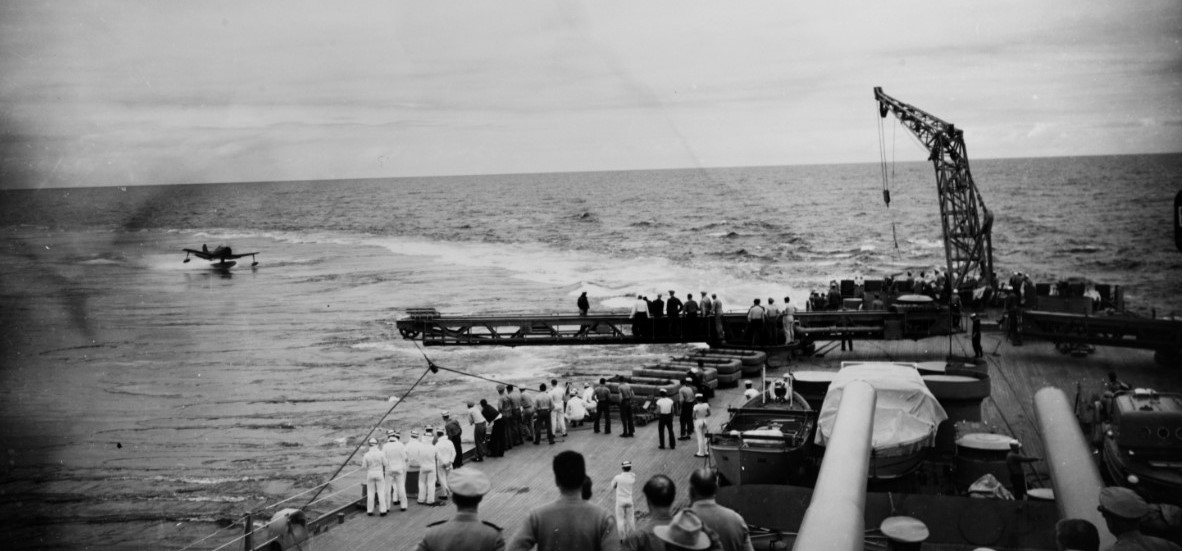
An SC-1 Seahawk makes a Charlie landing in Iowa's wake, 1947
As difficult and complicated as launch was, recovery was much worse. If the ship was anchored or moving slowly on calm seas, then it was simple enough. The seaplane would alight, then taxi up to the ship, where the crane would bring him aboard. But conditions like this were rare in war, when seas were often rough and ships couldn't slow down to recover their aircraft. Even the SC Seahawk, the last and most advanced catapult plane used by the USN, could only land if the waves were 5' or less in height, which was only the case about half the time in the North Atlantic.
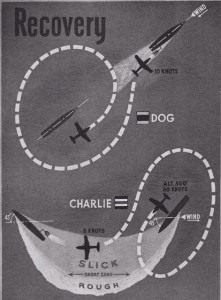
The Charlie and Dog methods of landing
Two methods were developed to solve this problem, known as Charlie and Dog. Charlie involved the ship making two 45° turns across the wind, with the ship's wake creating a relatively calm area for the seaplane to set down. Dog was even more difficult, as the ship merely held course, and the pilot landed in the ship's wake. As might be expected, this was a hazardous procedure, and loss rates for seaplanes were high even by the standards of the day. In fact, not a single SC Seahawk survives today, much of the fleet having been lost in accidents of various types.
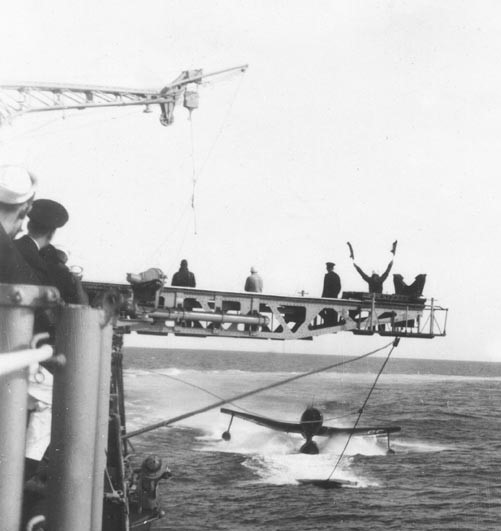
USS Little Rock recovers a Seahawk using the mat system.
Nor was getting the airplane onto the water the end of the matter. It had to be hoisted back aboard the ship, which was again fairly simple for a stationary ship in calm seas, but rather difficult if it was making any speed, due to the motion of the waves and the occasional tendency of the wake to suck the airplane under the ship. The most obvious way was to taxi the airplane alongside and hold position while a crane was swung out and the line hooked up, then cutting the engine just as the airplane was lifted out of the water. Some navies continued to use this method, including the Germans, but the Americans had devised a better way to solve the problem.

A Seahawk approaches Iowa's mat, 1947
The innovation was a special mat that the airplane would taxi over and latch onto with a spring-loaded hook in the bottom of the float. Once the pilot was on the mat, he could cut the engine and the hook would snag the mat, allowing the line from the crane to be hooked up in relative safety. Of course, as with most aspects of seaplane operation, it wasn't that simple. To tow the mat, one of the catapults was swung at 90° to the ship's side, while a breastline kept the mat from moving side-to-side. This in turn was a hazard if the plane got entangled in it, so a man was stationed with an axe to cut it away in an emergency. The pilot couldn't see the mat as he approached, so a signalman had to go out onto the catapult and guide him in. All of the fast battleships used the same 3-ton stern crane, and the crew had to work quickly to hook the line up in case the hook came loose.
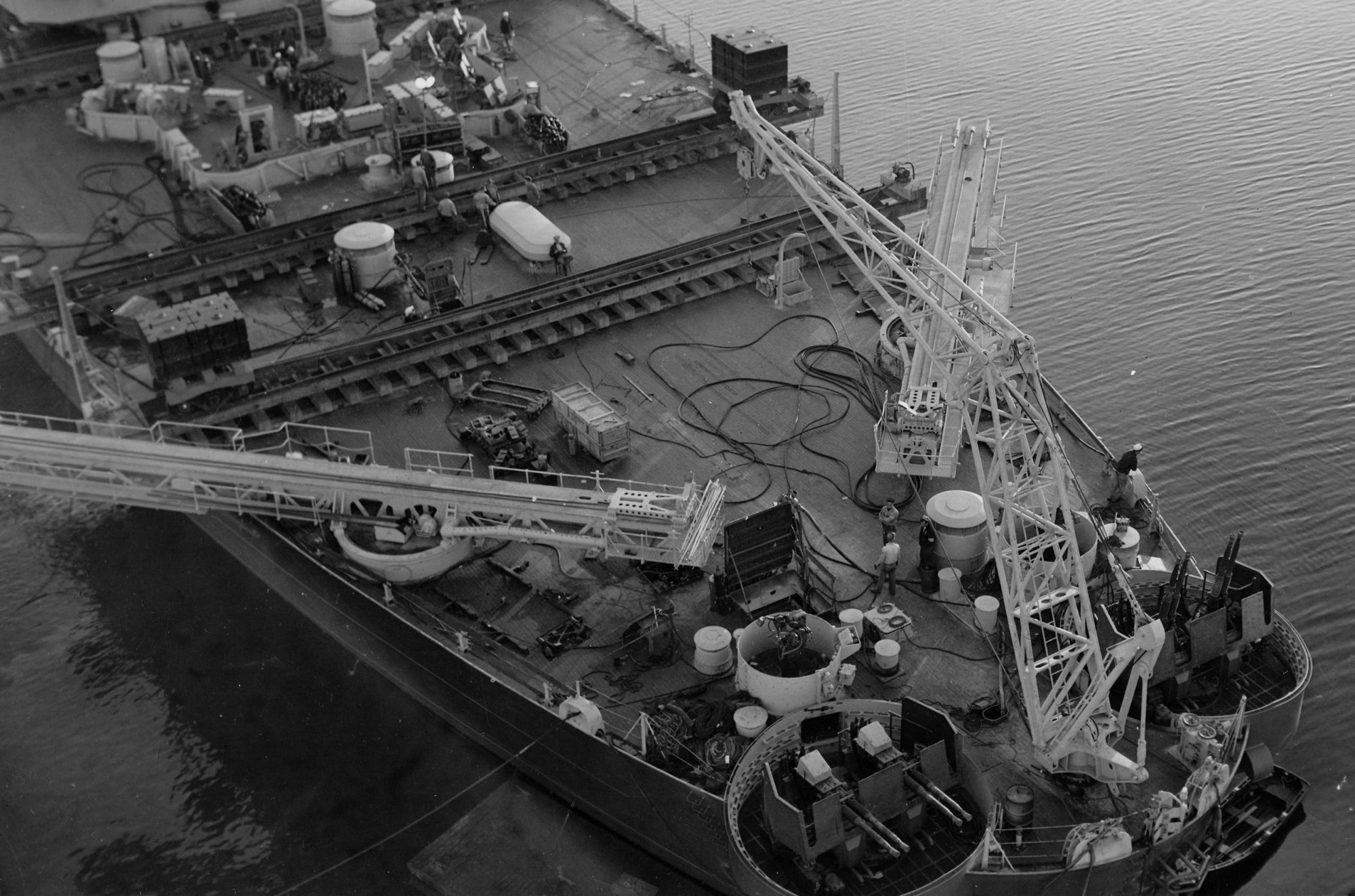
An excellent view of New Jersey's fantail in June 1945, including the crane and catapults. The tracks on deck are for an inclining.
Nor was hoisting a plane aboard a simple job. The airplane was only secured at one point, and it was a large and awkward load, which made it prone to spinning and turning over. Sailors used long poles to stabilize it as it was hoisted aboard and set down on one of the trolleys, to be prepared for the next flight.
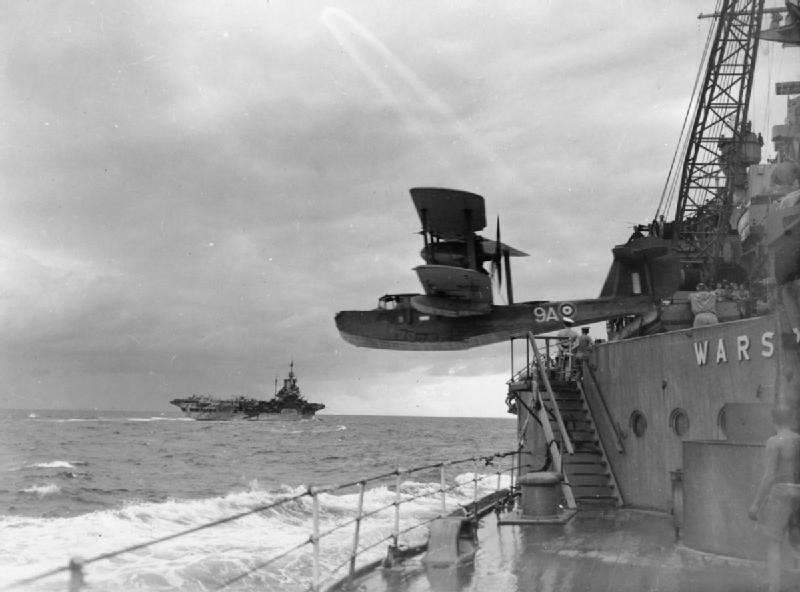
A Supermarine Walrus is catapulted from Warspite
British techniques were generally similar to those of the USN. The launch itself differed in only a few minor details, most notably the use of the cross-deck catapult, which could fire an airplane at as much as 2.75 G. The landing was equally similar, and it was only when it came time to hoist the plane back aboard that things really differed. Unlike the Americans, the British never developed a mat. Instead, one of the airplane's crewmen2 would climb out and attach a towed line directly to the nose. The engine was then cut, and the hooker-on would climb up and attach the quick-release coupling. This was attached to the main hoisting cable through a special grab which kept a constant tension, allowing the crane operator to easily close the grab when it was time to make the attachment.
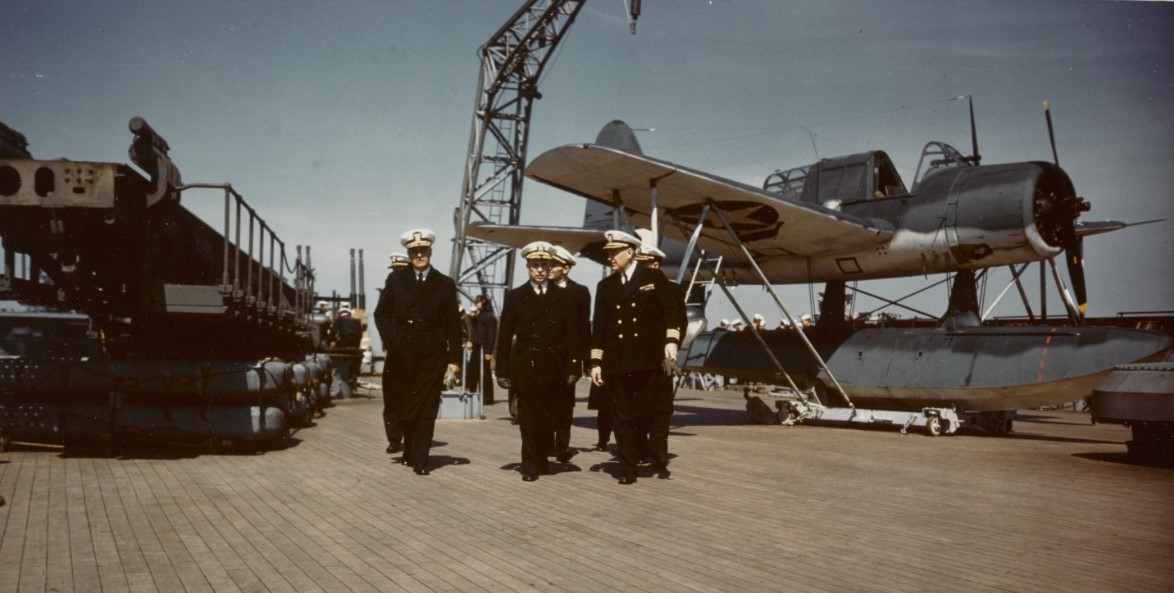
Captain John McCrea leads a tour past Iowa's Kingfisher
Before we close our look at the seaplane era, let's take a slightly closer look at the aircraft Iowa operated. She was originally commissioned with the Vought OS2U Kingfisher, an airplane known as "Old Slow and Ugly", but one that also gained a reputation for dependability and served as the Navy's primary spotting aircraft throughout WWII. It had a crew of two men, a pilot and a rear gunner/observer, and replaced the biplane SOC Seagull. It was armed with a single .30 cal machine gun firing forward between the cylinders of the engine, and another for the rear gunner, as well as a pair of 100-lb bombs or 325-lb depth charges for anti-submarine patrol.
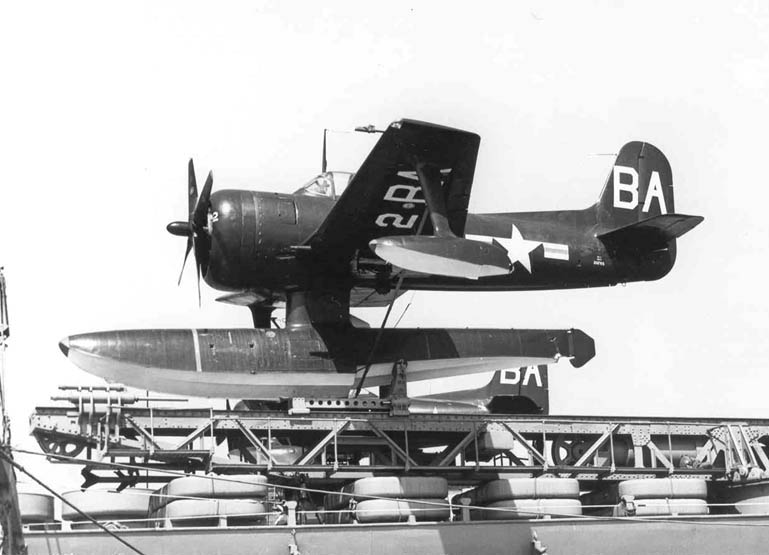
An SC Seahawk on one of Iowa's catapults
After her refit at Hunter's Point in 1945, Iowa's Kingfishers were replaced with Curtiss SC Seahakws. The Seahawk was by far the highest-performance battleship seaplane ever to enter service, a single-seater3 capable of nearly twice the speed of the Kingfisher. It had two .50 cal Browning machine guns, as well as the same bombload as the OS2U. To make sure the Seahawk could still perform the secondary missions of air-sea rescue and personnel transfer, there was a space inside the fuselage for a passenger. There was also a utility space inside the float that could carry bombs, cargo, or extra fuel, although it tended to leak and was often sealed and used for fuel only.
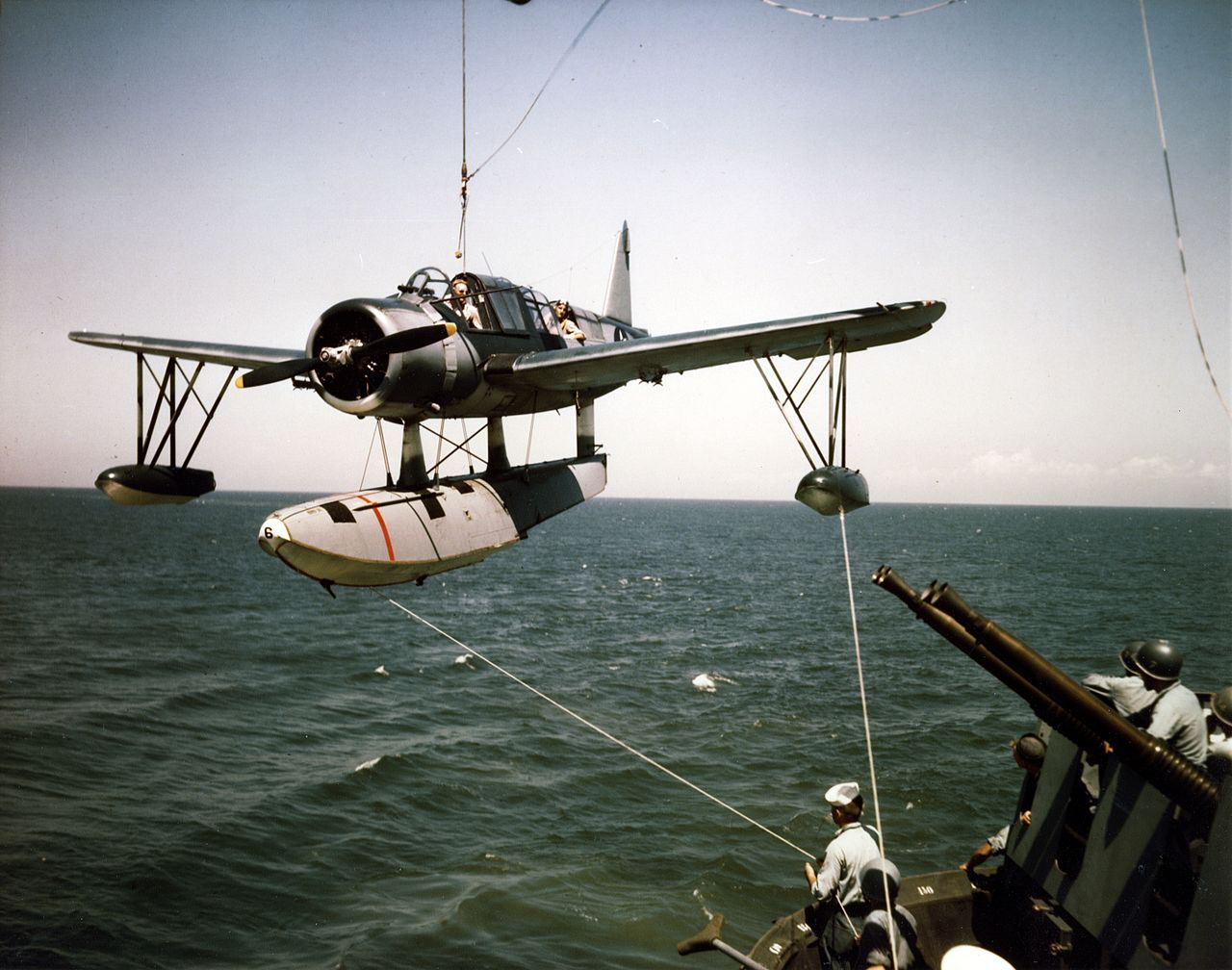
An OS2U is hoisted aboard Missouri, 1944
The end of the war brought a major change in battleship aviation. The huge number of carriers available meant that there was little call for the difficult process of flying floatplanes, while the development of the helicopter provided an alternative aircraft for the gunfire spotting and light transport missions that was far easier to operate. We'll look at this process next time.4
1 The majority of the information here comes from a truly excellent post on the subject at WWII after WWII. ⇑
2 For a variety of reasons, the British didn't believe in single-seat naval airplanes. ⇑
3 Interestingly, I think that the mat made this possible. The traditional recovery method requires at least two men, one to keep the plane on station with the ship while the other goes out and hooks up to the crane. Eliminating the second seat saved a fair bit of weight, which was particularly important in seaplanes, which were constrained by the maximum weight of the catapults. ⇑
4 For more information on this era, check out the article Iowa's Air Force, as well as a two good pages on Navsource. ⇑

Comments
I have nothing against the SOC, but also have limited space and wasn't that interested in looking at float aviation outside the world of the battleship because I have to control my scope somehow.
And WWII after WWII has them as "Charlie" and "Dog", including what looks to be a page from an original document labeling them that way.
It may be we are both correct, and for some reason the designation was changed over time. The Able and Baker methods of recovery are rarely chronicled, as they were restricted to retrieving aircraft in ports or anchorages, where the aircraft were simply hoisted out and hoisted back aboard. Given that scheme, Charlie would fit in logically. However, I have read many original ships’ logs--mostly prewar and early war cruisers’ logs--at the U.S. National Archives and Cast is written consistently for operations on the high seas. For example, on December 2, 1941, during the last convoy to reach the Philippines before war broke out, USS Boise (CL-47) used the Cast method at 1125 to recover SOC 9-CS-6 and it capsized (the crew was readily rescued and the aircraft back on board less than an hour after capsizing). Perhaps because of that mishap, at 1630 the light cruiser recovered two aircraft by the Dog method. William T. Larkins, 1996, Battleship and Cruiser Aircraft of the United States Navy, 1910–1949, likely the most authoritative and comprehensive source on USN floatplanes, uses Cast and Dog without exception. On page 17, he provides reminiscences from two former battleship floatplane pilots. Paul H. Harrington (LTjg, VO-3B, Idaho) remembers, “It was a fun tour, catapulting, Cast recoveries, and all the rest.” And James M. Elliott (LTjg, VO-3, Mississippi) writes, “In the piping times of peace, battleship aviation with the SOC’s was great fun. The excitement of catapult launches and Cast recoveries never seemed to pall. Watching the big ships start their ninety-degree swing through the wind to produce a beautiful ‘slick’ in which we could safely land in almost any weather was always interesting.” Which brings me to my last diff: American floatplane aviators invariably used “slick” for the smooth water produced for landings. I believe “lee” was more British in usage.
Have meant to declare my praise for your excellent photo finds, some in color yet. Anyway, I have a partial answer: The American military/naval alphabet in 1913 included Able, Boy, Cast…; in 1927, Affirm(ative), Baker, Cast…; in 1938, Affirm, Baker, Cast… In World War II, Affirm changed back to Able, Baker remained, Cast changed to Charlie, whereas Dog, Easy, Fox, George, and others remained constant 1913 through the end of WWII. That writ, though, I think Cast continued in use well into the war for that method of floatplane recovery. I’ll concede my interest therein focuses on just-prewar and into 1942–43, but I have read extensively on the entire shebang.
In the early 20th century, and perhaps before, for British Army signallers, ack stood for a--thus ack-ack for antiaircraft fire--and pip for p. In his World War I trilogy, Loss of Eden, John Masters reminds the reader of the use of “ack emma” and “pip emma” in lieu of a.m. and p.m., essential to get operational timing right against the background of shell bursts and static-prone telephone lines, while crouching in the communications dugout not far from the mainline trench.
Huh. I did not know that about the phonetic alphabet pre-WWII. And I do actually have that book, but recall getting it about the time I was wrapping this up, because I am often bad at planning. But in any case, I am glad someone cares that much about float aviation, even if I am forced by my format to keep doing new things.